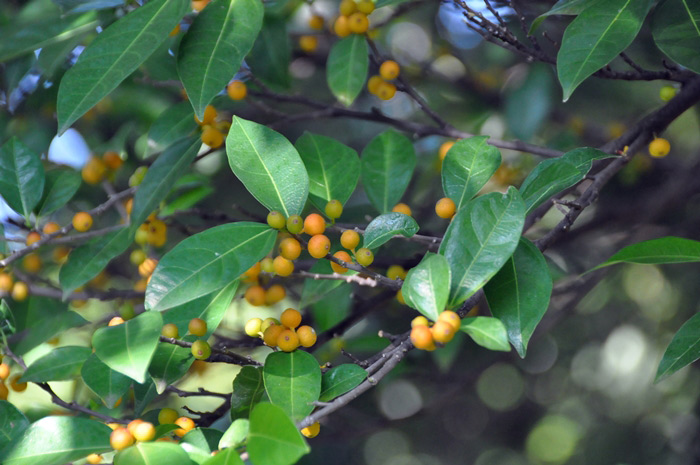Ficus ampelas
Although its Chinese name includes the word “Philippines,” this plant is widely distributed throughout Southeast Asia and the Pacific Islands, including Taiwan. It can be found in secondary broad-leaved forests at low to mid altitudes across the island and is a common member of the forest ecosystem. The king's fig trees were originally planted in the Monsoon Rain Forest Area of the Botanical Garden, and there is also a large tree by the Xitun Road Square of the museum. However, due to bird dispersal, seedlings can now be found throughout the entire green space area, including the Botanical Garden.
The fruits of the king’s fig are small in size, and their outer skin exhibits a variety of colors depending on their level of ripeness. When they first emerge, the fruits are light green, gradually turning yellow, and finally becoming bright red. Interestingly, fruits on the same tree often do not ripen simultaneously, resulting in the presence of fruits of different colors at the same time. This color variation not only attracts human attention but also draws numerous animals, particularly birds, to feed on them. While consuming the fruits, birds inadvertently serve as the primary dispersal agents for the seeds of king’s fig, effectively aiding the tree's reproduction and expansion across different locations.
The leaves of the king’s fig are an important food source for the larvae of many species of butterflies, including Cyrestis thyodamas subsp. formosana, the blue-banded king crow and striped blue crow.
